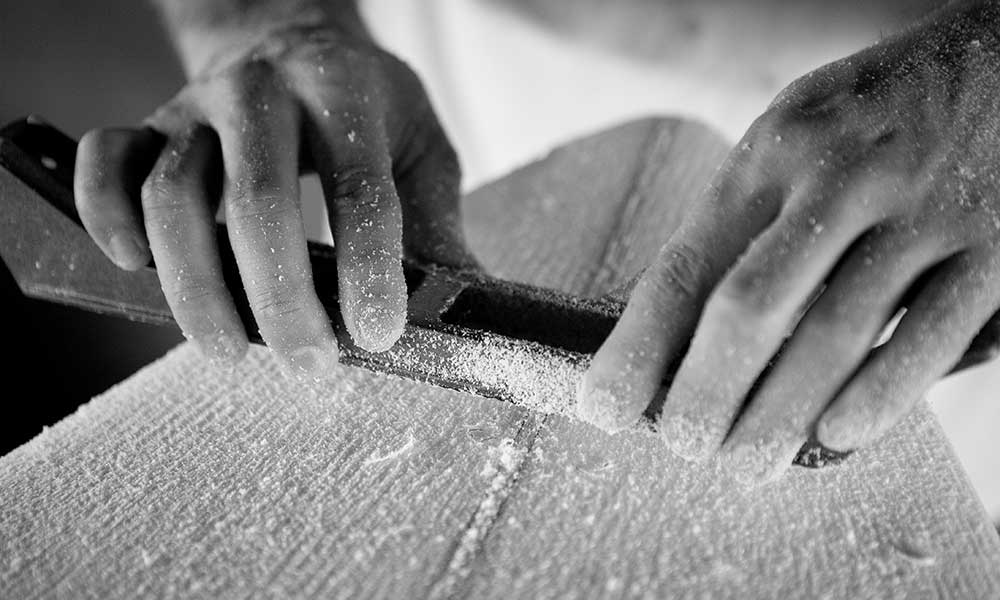What is a single concave and a double concave surfboard?
Which option is best for you and what sort of benefits do they provide when you get out on the waves?
What is a Surfboard Concave?
A surfboard’s “concave” is the subtle contour on the bottom of the board.
Pick up a surfboard in your local shop, flip it over, and you’ll notice a contour moving gradually from nose to tail.
The concave helps to direct the flow of water and air underneath the surfboard, pushing it toward the fins.
Changing the concave changes the air and water flow, which impacts the speed of the board, as well as the way that it reacts underfoot.
Single Concave
A single concave uses just one contour that runs from the nose to the tail. It’s designed to produce rapid water flow on the bottom of the board, and this facilitates a fast surf, making single concave boards perfect for fast surfing on big and clean waves.
The problem with a single bottom contour is that it doesn’t perform very well in choppy surf and is not very versatile.
If you’re looking for something that will tackle those optimum conditions and provide a great surf throughout, a single concave is ideal.
If you need versatility, this is not the design for you.
Double Concave (Single to Double Concave)
Most bottom contours are double concaves.
The design contours from the nose to the middle of the board and then again from the middle to the tail.
Also known as a single to double concave, this surfboard design channels the water into two streams and provides more of a balanced surfing experience.
Double concaves are better suited to beginner surfers and heavier surfers, as well as those seeking a more balanced surfboard.
Flat Bottom
The flat bottom board doesn’t have a contour.
It’s generally found on much cheaper boards and is used to save money but it also provides some benefits.
Flat bottom boards are great for planing, and so they give beginners the speed they need on calmer waters.
Flat bottom boards are not ideal for advanced surfers, as they’re not as easy to control on bigger and more powerful waves, but they certainly have their benefits.
Vee Concave (V Bottom)
The V concave makes it easy to move from rail to rail and is often used on retro fish boards. The V-shaped bottom contour makes for a very responsive surf.
What Type of Surfboard is Best for Beginners?
A flat bottom concave is one of the best options for beginners as it’s great for planing.
There are many disadvantages, including the instability over bigger waves and in choppy conditions, but if you’re a beginner, it’s unlikely that you’ll be tackling those waves.
A double concave is also a good option as it offers a balanced surfing experience.
Generally speaking, the bottom contours should not be your main consideration, however.
You need to focus more on the length and volume of the board (a longboard is better for beginners than a shortboard), as well as the price (if budget is an issue) and whether it’s a hard top or soft top.
It’s easy to get lost in the specifics when choosing your first board.
You find yourself thinking about the shape of the nose and the tail, as well as the rails, length, thickness, and volume, and that’s before you think about single concaves vs double concaves, single fins vs tri-fins, fiberglass vs epoxy, and other such comparisons.
Keep it simple. Find something big, comfortable, and affordable, and take it from there.
Once you get to grips with the sport and become more comfortable on the water, you can consider upgrading and can start thinking about all these finer points.







